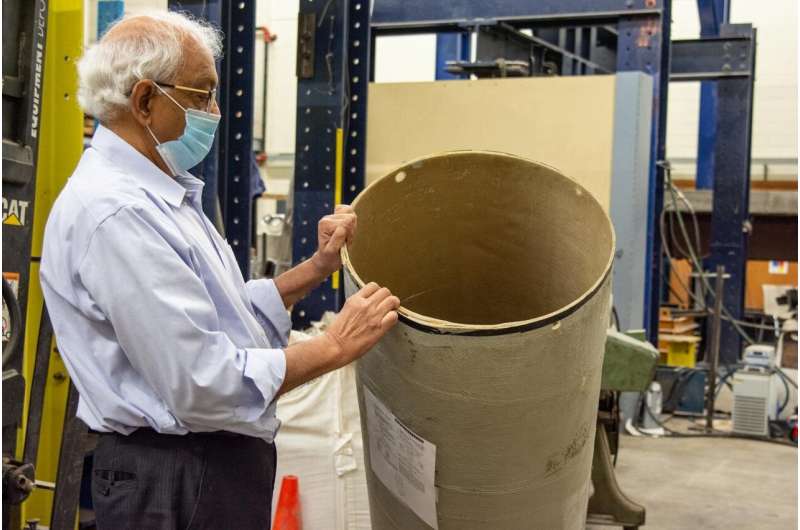Safer future for rail transportation of hazardous materials being developed

A team of West Virginia University researchers are making railways safer by developing a Band-Aid-like protective jacket for tank cars that haul hazardous materials. The composite material, because of its superior puncture and fire resistance qualities, will prevent spills and leaks caused by accidents, ultimately protecting surrounding communities, the environment and emergency responders from disasters.
The multifunctional protective jacket, made up of glass and polymer, will consist of a layer of high-density polyurethane foam to improve fatigue, puncture and fire resistance. This layer will be sandwiched in between layers of Kevlar reinforced resin.
"These glass fabric-foam materials are wrapped around like a Band-Aid and infused with resin like epoxy to fuse with the steel substrate," said Hota GangaRao, Maurice A. and JoAnn Wadsworth Distinguished Professor in the Wadsworth Department of Civil and Environmental Engineering and director of the Constructed Facilities Center.
Billions of gallons of hazardous materials are transported in the U.S. each year. While the preferred method of transportation is by truck, tens of thousands of rail cars are still in use today because of their capacity to hold upwards of 35,000 gallons of materials in a single car.
According to GangaRao, these railcars derail and become punctured when they collide with the steel track, leading to environmental hazards and safety issues. Roughly 616 railroad accidents have occurred each year since 2010, according to data provided by the Pipeline and Hazardous Materials Safety Administration.
The $2 million dollar grant from the United States Department of Transportation's Pipeline and Hazardous Materials Safety Administration division will be used to create the innovative new composite material developed by GangaRao's research team that will improve the overall durability of the tank cars compared to the high-performance carbon steels of current tank cars.
According to GangaRao, this research and development can be expanded to other areas where there is a risk of terrorism and can potentially be used to protect armed vehicles of the U.S. military.
"The basic research data that will come out of this work will be a game changer in terms of cost effective durable composite products that will enhance the service life of a whole range of civil and military infrastructure," said GangaRao.
Testing for the new materials and projective jacket will be done at the Constructed Facilities Center in the Statler College of Engineering and Mineral Resources and will undergo testing by outside agencies to confirm the original results.
Provided by West Virginia University





















